Summer garden tour: Dorset
Our AGM this year was held in Dorset and was followed by a wonderful tour of local gardens. The weather was perfect too. Heather Mackinlay has let us use extracts from her diary to go with some beautiful images she and Guy Cheeseman provided. Heather writes:
Sunday 30 June
Travelled to the Springfield Country Hotel, Wareham, Dorset. I met Caroline Bilsby at Waterloo and we chatted all the way. It was strange to go through Branksome, Parkstone, Poole and Hamworthy on the way to Wareham as I lived in Parkstone throughout my childhood and it was my family home until my father died in 1985.
The weather today is mercifully cooler than yesterday, which in London was more than 32°C. Today was a pleasant 21°C. Dorset feels quite remote but is now more built up and developed than when my father died, but that was 34 years ago.


Looking out of the train window across Parkstone it looked as if many plots had been subdivided and lots of infill houses and flats built. I was also reminded of train journeys to school in Oxford on the steam train, the Bournemouth Belle, which used to wind its way across the south of England then through Oxford before continuing on up to Manchester via Crewe. I remember the heavy carriage doors with leather straps to hold the windows in position when you opened them to get some fresh air, risking a face full of coal smuts!
Arrived at the Springfield Country Hotel, whose distinctive entrance is shown in the pictures to the left and above.
As ever a lovely group of members. With each MPG event I attend I recognise more and more people and it is great to meet new ones.
Heather Martin introduced me to Helen Byrne, because of our shared love of ballet, and I also met Michael Baron who lives in the same village as a former work colleague of mine. It was lovely to meet Gilly Drummond who had come with her black spaniel, and Michael Turner, as I sat next to him writing the minutes of the AGM on the first evening. After the formal business of the AGM, there were lots of suggestions for future trips. I loved most the idea of Sicily.
Monday 1 July – The Hollow, Eastington, Cranborne
I had such a marvellous conversation at breakfast with Eve Tymon, Sue Tymon’s daughter, who is working at what used to be the Winfrith nuclear research site as an engineer. Apparently the roads have been named after reactors and one is called Dragon Road. My father had been the chief design engineer of Dragon! Eve studied mechanical engineering at Bristol.
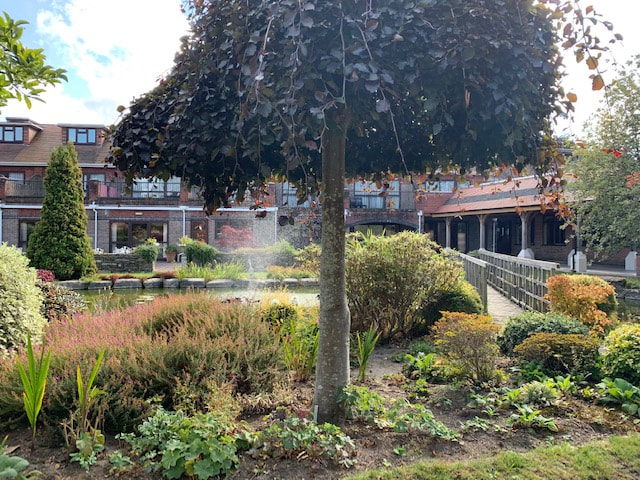
A simply glorious day, gorgeous weather, sunny, dry and a gentle breeze with a temperature of about 22 °C. Our first trip took us through Corfe Castle and south to Swanage where we visited The Hollow, a small garden created in a former quarry, a delight of shapes, colours and forms, featured in the subsequent August issue of The Garden. We descended steep stone steps into the garden which sits in a protected bowl. The beautiful Purbeck stone much in evidence and our hostess Suzanne Nutbeem told us about the work to excavate, prepare and shape the stone into walls and paths before planting could begin. The colours, planting and convoluted walkways were a delight and the three images below give a flavour. The mixture of grasses, roses, copper leaved prunus, fuchsia, philadelphus and soft silver leaved planting with a tall overarching magnolia coming to the end of flowering, were beautiful against the blue sky above.

Miscanthus nepalensis

Stepped stone walls

Erigeron karvinskianus
Then west up onto the Downs to Worth Matravers where we visited Eastington Farm – a private house and small farm looking south with views of the sea. We were greeted by the owner at the gate and we walked down the drive through a field of cows with their calves and over a cattle grid to a broad gravel drive lined with wide grass verges and a neat row of low fruit trees. Purbeck stone walls were much in evidence again and we walked through from the drive to the house which was fronted by a magnificent ancient ash tree, in the centre of a round lawn with a surrounding turning circle.
In a corner of the drive, a trestle table was laid with tea and coffee, chocolate brownies, toffee chocolate cake, and nut squares. Rachel and Allan James, the owners, were so welcoming and explained some of the history of the house which they took over in 1985, their first task having been to plant trees as wind breaks to the east and west of the house. The garden had evolved, growing and changing to suit the needs of the family with the able help of the gardener Anita who lives in the local village of Worth.
The garden was laid out with rooms surrounded by stone walls. We were shown the gardens, including the vegetable garden with raised beds, the flower-filled orchard and meadows with glorious views across fields filled with sheep. The various separate gardens were full of glorious classic summer English garden planting, nestled between the two huge stands of windbreak trees. The partly paved garden around the swimming pool with its stone pool house was full of roses in full flower and smelling wonderful. Paths were made up of edge laid Purbeck stone between which clouds of erigeron had self seeded.
From one point you could see, to the west, a row of white lighthouse keepers’ cottages on the cliff top, St Aldham’s Church and the radar memorial in the distance. One of the much admired roses was Francis E Lister, a single white blushed to pink rambler with a soft perfume, trimmed to maintain a bushy shape. The following four pictures were all taken here.




Pond with duck house
We then travelled on north towards the chalk valley of Cranborne Manor where the landscape opened out and swathes of grasses and corn were turning gold and waving in the breeze. We arrived there at 2pm and had homemade pea and mint soup, crusty bread and sandwiches in a private room looking onto the garden centre. Sue Bennison handed each of us a coloured plan of the manor’s gardens which doubled as our entrance ticket. This historic garden was laid out in the 17th century by John Tradescant.
The 38 of us were free from 2.30 – 4.30 to roam on our own around the 30 acres of orchards, vegetable gardens, flower borders, grass and orchid meadows. I was particularly struck by a perfectly placed Elisabeth Frink bronze ‘Pilot’s Head’ on a plinth in the dairy meadow, surrounded by waving tall grasses and wild flowers including many small wild orchids. A huge oak chair by Henry Brudenell-Bruce sat in another meadow among ox-eye daisies. The gardens wrapped around the huge manor house, owned by Viscount Cranborne, which was heavily decorated with stone family crests, tall chimneys and latticed windows.

The South Front looking out from the manor to the gatehouses.
There were yew hedges, a croquet lawn, apple tree avenues, a pleached lime avenue, the trickle of the River Winterbourne to the northern edge, an apple tunnel underplanted with nepeta, and roses everywhere.
We were also able to go into the adjacent St Bartholomew’s Church, with an interesting barrel roof and medieval murals, where there had been a recent wedding and a flower festival. In the entrance porch was a sign reading ‘Wait here for cake’! We were all back on the bus by 4.30 and back at the hotel by 5.30 in time for the lecture by the former curator of the Chelsea Physic Garden and RHS Rosemoor, Christopher Bailes, which was interesting but I would have liked to have seen more flowers.

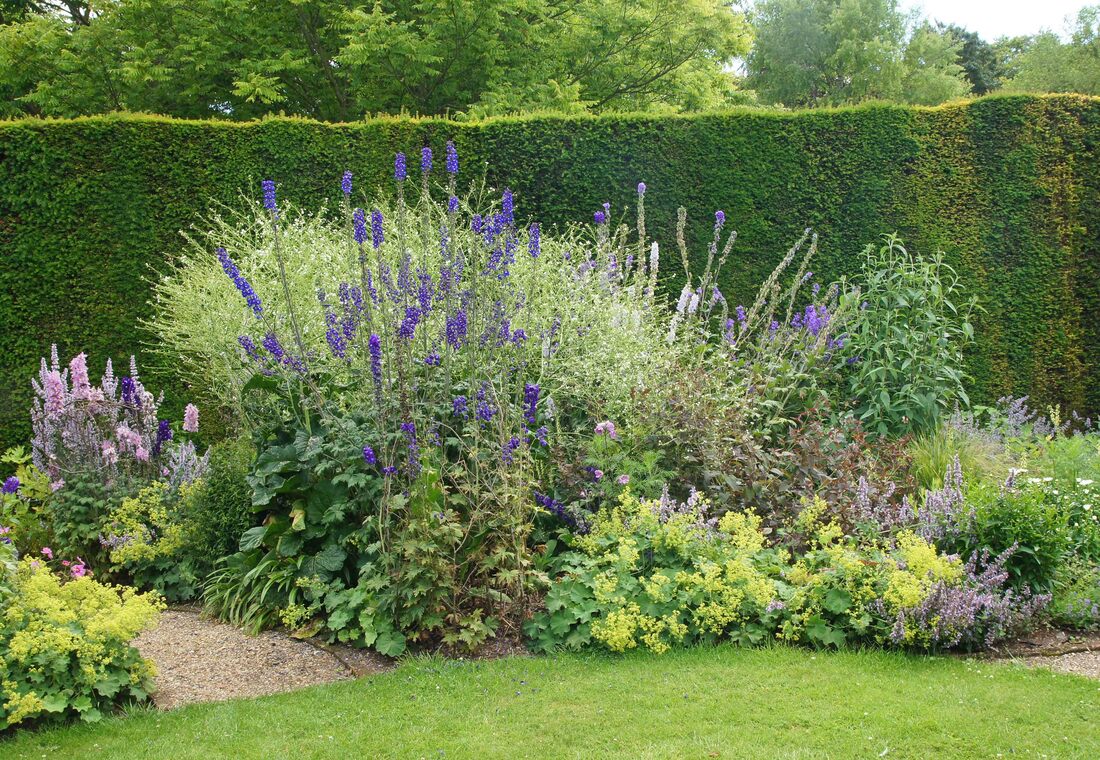
Tuesday 2 July – Corscombe House, Abbotsbury Gardens, Chideock Manor
We are able to sit where we want at each meal. Today at breakfast, Stephen Jury, talking about adventures in Ireland: “Will you be having the early breakfast sir?” At 9am!
Now another day of adventures. We leave at 8.30 am and head west to Corscombe House where Jim Bartos proudly shows us his immaculately designed and formally laid out garden, with Mediterranean-influenced gravel area and Persian-influenced reflecting pool. There is a glorious view across north Dorset from the hill behind the garden, also a lovely vegetable garden and a secret walled Mediterranean garden. The house was previously a rectory.
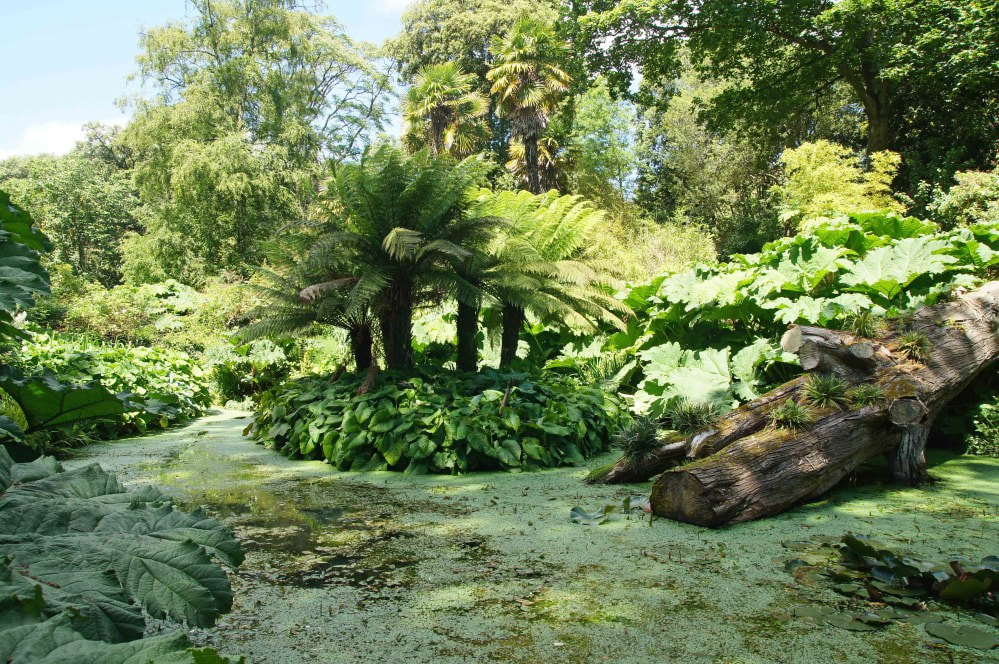



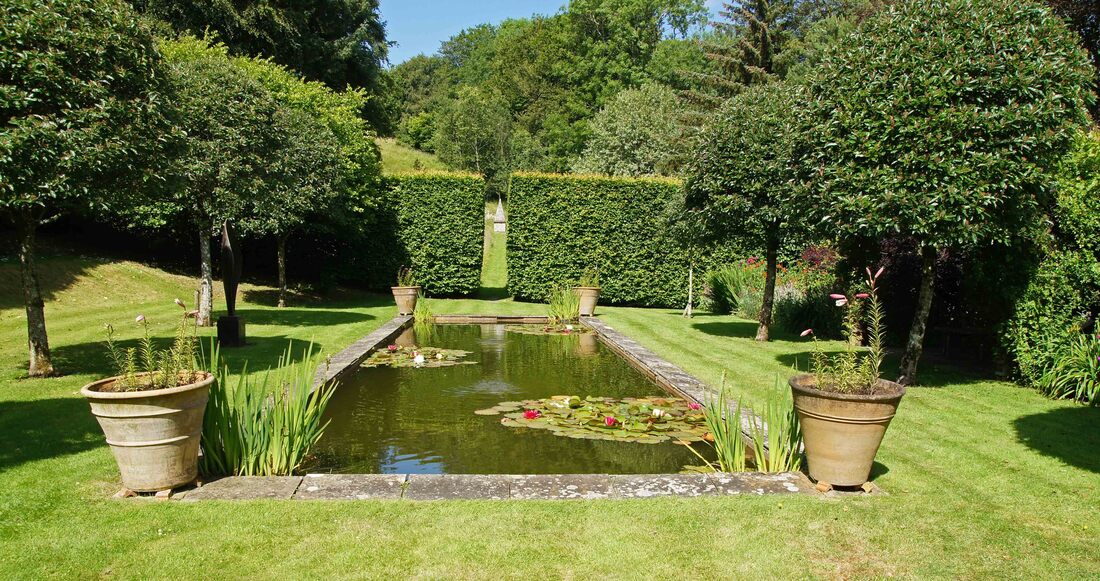
One of the formal garden rooms, with pool flanked by standard Craetagus


View from the hill behind Corscombe House

Lychnis, alstroemerias, roses backed by dark foliage
We then drove south towards the coast, topping the coastal hillside to see the sea again with Chesil Beach stretching away towards Portland Bill. We dropped down into Abbotsbury. The 30 acres of Abbotsbury Gardens are of a mostly subtropical nature. We had the option of being in one of two guided groups, then had a nice lunch and another walk. The gardens are jungly in places with Asian, Chinese and Australian groups of planting and other region-specific plantings with huge trees and flowering shrubs.
From Abbotsbury our coach took us north west to Chideock Manor, a large Georgian house (pictured below) bought by Howard and Deirdre Coates in 1996. One fascinating experience that Deirdre Coates recounted to us was how on a frosty morning soon after they had moved in to the house, she had looked out of the bedroom window to see an almost ghostly pattern in the frost. It was caused by remnants below the surface of a previously existing parterre. She decided to reconstruct it.
Some of the large old trees in the open parkland section of the garden were given the space they needed to flourish and there were beautiful warm red, brick walls surrounding the orchard and vegetable gardens. The bog garden created beside a stream with ponds was exquisite and we were able to go into the little Roman Catholic church attached to the manor.






Some of the large old trees in the open parkland section of the garden were given the space they needed to flourish and there were beautiful warm red, brick walls surrounding the orchard and vegetable gardens. The bog garden created beside a stream with ponds was exquisite and we were able to go into the little Roman Catholic church attached to the manor.
Wednesday 3 July – Harvard Farm, Farrs, Sculpture by the Lakes
Today we have another three lovely gardens, starting at Harvard Farm, beyond Dorchester, the home of Tim and Dilly Hobson. They bought the place in 1985, when it was almost derelict with concrete covering the area round the house. Apart from the challenge of that, again one of the first concerns was to plant a wind break. There is now a collection of glorious garden rooms, a tennis court, beautiful stone terraces, paths and steps. The planting is first-rate with many examples of cloud pruning created by their son Jake Hobson, cloud pruning specialist whose work is much influenced by time spent in Japan and by his study of sculpture at the Slade in London. We had fun climbing a spiral path up a wild flower mound in the field near the house, shown in the image below.

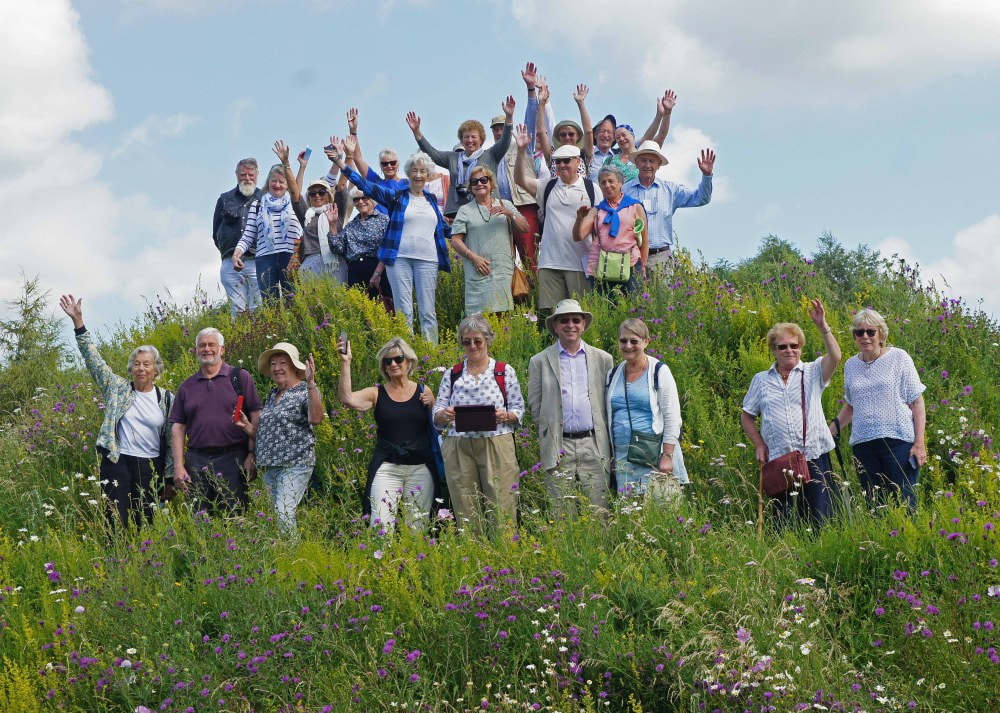


We then loaded back onto the coach for the drive to Farrs, in Beaminster, the beautiful stone house of John and Jennie Makepeace. We had guided tours of the garden and inside the house in groups. Her garden is a mixture of flowers and kitchen garden, his is contemporary with an emphasis on architectural grasses.
John is a leading designer of contemporary furniture. He has encouraged and given opportunities to other craftsmen and women, and has bought work by a variety of silversmiths, sculptors and painters, examples of which were on display around us as we sat in the dining room to hear his talk. One of his early students in the furniture design and making school he established at Parnham House was Viscount Linley. John’s passion, love and respect for the materials he uses was evident and his adventurous and experimental use and understanding of the nature of the materials produced some exciting results, several of which we were sitting on. We admired glorious lightly eccentric chairs, a beautiful long ripple ashwood table, chairs for the Bank of Luxembourg, other chairs for the University of Portsmouth. Works by others included a large red and purple, scalloped edged carpet made by a local craftswoman; a Terry Frost painting which matched John’s shirt (see below). It was so interesting to hear him talk about art, craftsmanship, trees and his fabulous wood store with ancient woods, some hundreds of years old including oak and ash.

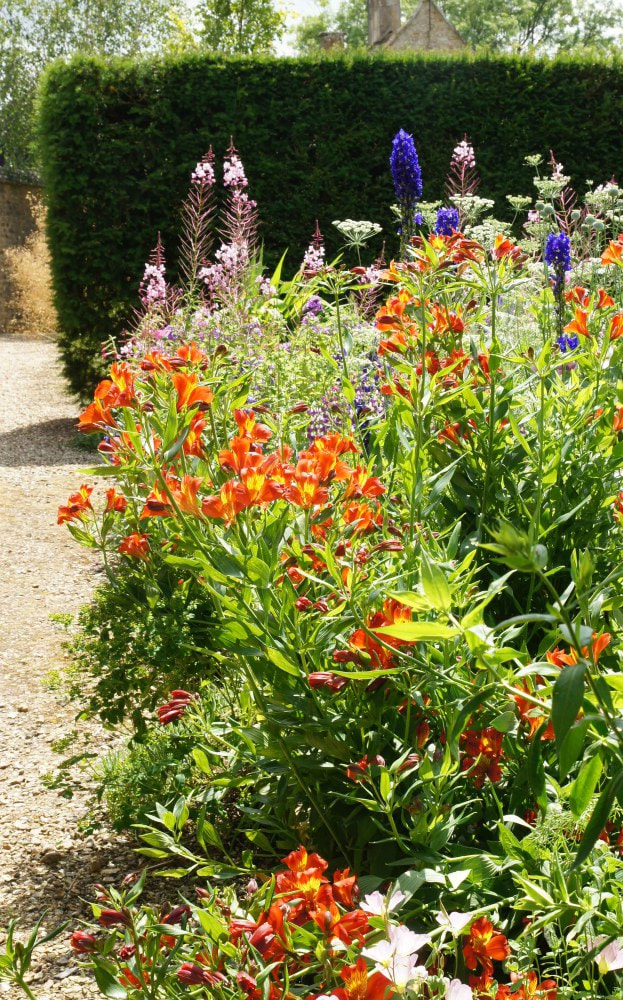


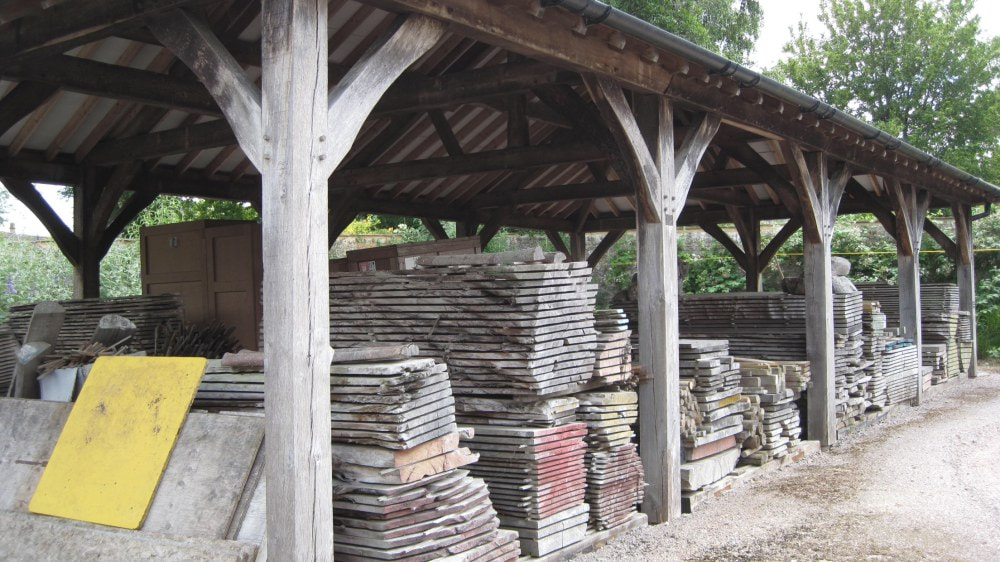




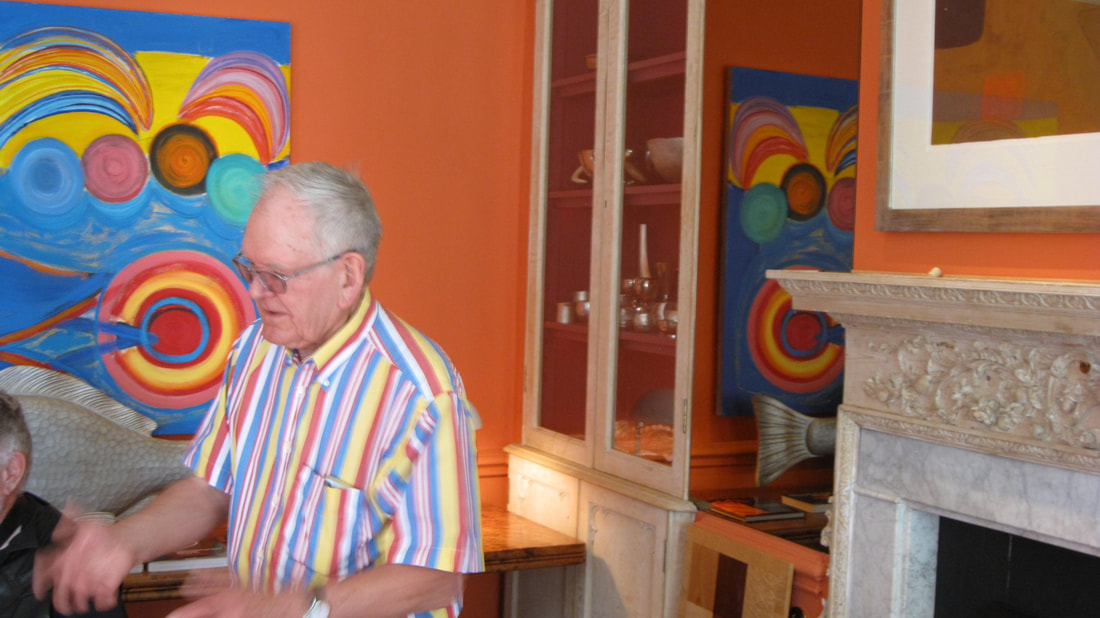
From Beaminster we headed to Simon Gudgeon’s lakeside sculpture gallery and garden (Sculpture by the Lakes) where we had a glorious lunch of salads and fruit, much of them home grown, ice cream and coffee. We explored the sculptures and pathways. Four images below provide a small sample. Several people left us today for various reasons so our group of 38 has dwindled to about 30.

Sculptures by Simon Gudgeon



Thursday 4 July – Knoll Garden and Nursery
Our last day. Much to think about. So many differences from the Dorset of my childhood, then an isolated county where Far from the Madding Crowd was filmed in 1962, starring Julie Christie, Alan Bates and Terence Stamp, with some regulars from the Pheasants pub in the village of Plush as 18th century farm workers. Our final garden visit was to Knoll Garden and Nursery, at Hampreston. It’s owned by Neil Lucas, an authority on ornamental grasses, and it has a Mediterranean-style gravel garden. We were guided round the site by two experienced and well informed volunteers. The garden is environmentally friendly with insect and reptile retreat locations. During a recent storm a large gum tree had blown down but, having assured that it was safe, it has been allowed to remain to allow a managed slow decay process in situ in line with the centre’s policy of eco management. The images below provide a flavour.



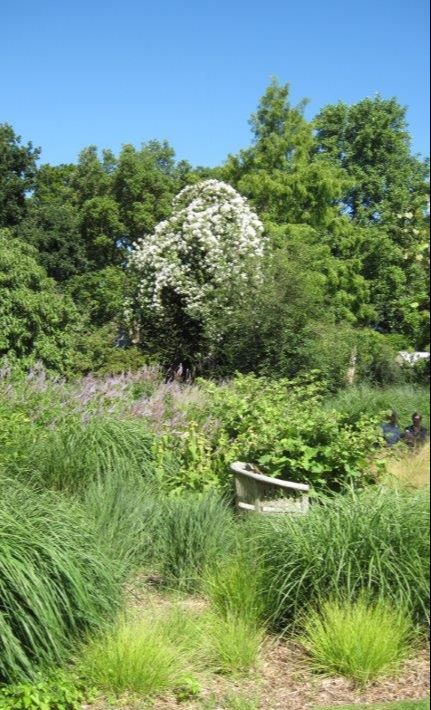
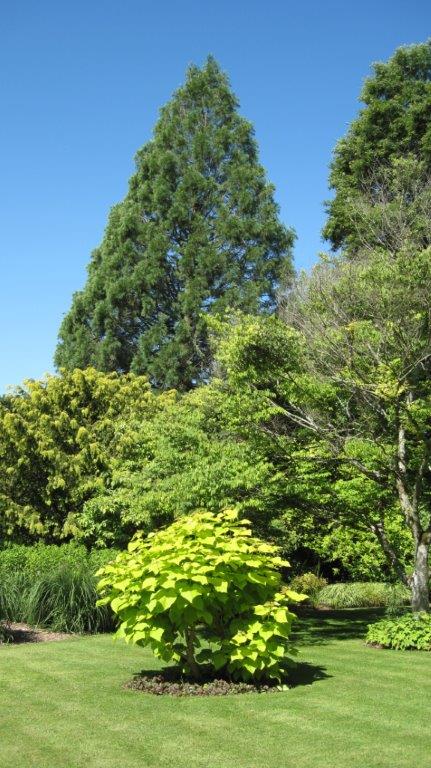
Catalpa aurea


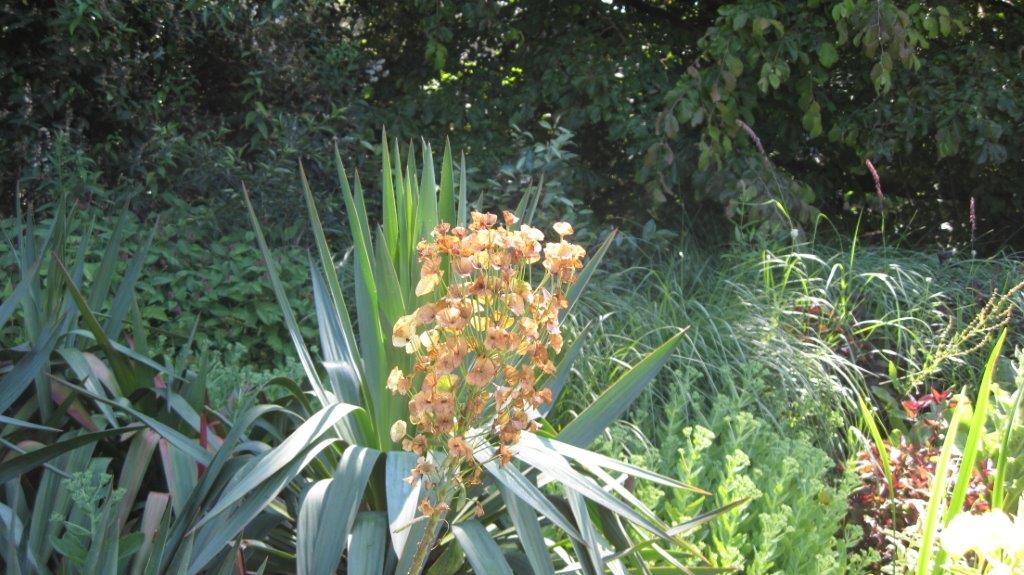





Bamboo
After our excellent tour we were able to enjoy looking round the nursery and buy plants before we began to scatter to make our journeys home.
It has been so lovely to spend these five days rediscovering this much loved county with its wide open hillsides, soft air from the Channel, the winter wheat greening to gold, the sheep and cattle, agricultural vehicles lumbering along the roads, gardens billowing with flowers, and wonderful hidden places in such empathetic company thanks to MPG and particularly Sue Bennison who, I’m told, discovered all the gems we’ve been able to visit and see.
Photos: Guy Cheeseman
Edited diary extracts and photos: Heather Mackinla


